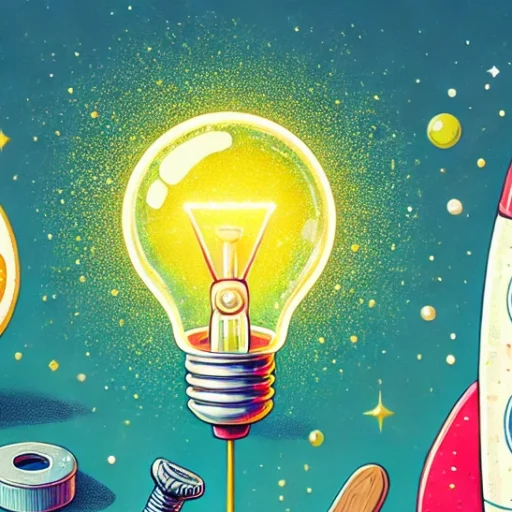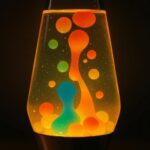Have you ever wondered how sound travels or what sound waves look like? While sound is an invisible force, its effects can be seen and felt. With just a few simple tools, you can create a fascinating DIY experiment to visualize sound waves and understand their vibrations better. In this blog post, we’ll dive into the science behind sound waves and guide you through a fun, easy-to-replicate experiment using nothing more than a cup, a phone, water, and a few household items.
The Magic of Sound Waves
Sound is all around us, from the chirping of birds to the hum of the refrigerator in your kitchen. But have you ever stopped to think about what sound actually is? Simply put, sound is a form of energy that travels through a medium, like air, water, or solids, in the form of waves. These waves are created by vibrations—when an object vibrates, it pushes and pulls the molecules around it, transmitting energy outward in all directions.
The human ear can detect these vibrations within a specific range of frequencies, which we perceive as sound. But sound waves themselves are invisible to the naked eye. This is where our experiment comes in: by using everyday objects, we can make the invisible visible and witness the fascinating patterns created by sound vibrations.
Setting Up Your Experiment
To visualize sound waves, you don’t need expensive equipment or a lab. Here’s what you’ll need:
- A clear plastic cup or a glass cup
- A phone or any device that can play music or tones
- A pitcher of water
- A spoon or a small object to tap
- A dark or neutral-colored background
- Optional: Food coloring or a flashlight for better visualization
Step-by-Step Guide
-
Prepare the Cup: Fill the cup about halfway with water. If you’re using food coloring, add a few drops to the water to make the visualization more vibrant.
-
Set Up the Background: Place the cup on a dark or neutral-colored surface. This will help you see the water more clearly when it vibrates.
-
Play the Sound: Open a music app on your phone or use a tone generator app to play a steady tone or a song with clear beats. Place the phone near the cup but not touching it.
-
Observe the Water: As the sound plays, carefully observe the surface of the water. You might notice tiny ripples or patterns forming on the surface. These are the visual representations of the sound waves.
-
Experiment with Different Sounds: Change the music or tone to see how different frequencies and volumes affect the water. Higher-pitched sounds and louder volumes will create more dramatic vibrations.
-
Add Some Motion: Gently tap the spoon against the side of the cup or move it near the water’s surface. This will introduce additional vibrations, creating a dynamic interplay of patterns.
The Science Behind the Vibrations
When sound waves travel through the air, they carry energy that can cause other objects to vibrate. In this experiment, the sound waves from your phone are interacting with the water in the cup, causing it to vibrate. These vibrations create ripples on the surface of the water, which you can see with your own eyes.
The frequency and amplitude of the sound waves directly affect the patterns you observe. Higher-frequency sounds (like high-pitched tones) create smaller, faster ripples, while lower-frequency sounds (like deep bass notes) create larger, slower-moving waves. The volume of the sound—its amplitude—determines how pronounced these ripples are. Loud sounds will create more vigorous vibrations, while softer sounds will result in subtler movements.
This phenomenon isn’t limited to water. You can observe sound vibrations in other materials too. For example, place a few grains of rice or sand on top of a subwoofer or a speaker, and you’ll see them jump and dance in response to the music.
Tips for a Successful Experiment
-
Use the Right Container: A clear cup is ideal because it allows you to see the water clearly. Glass cups tend to produce clearer vibrations than plastic ones, but both work well.
-
Adjust the Volume: If the sound is too soft, you might not see any vibrations. Experiment with the volume until you notice movement in the water.
-
Minimize External Vibrations: Place the cup on a stable surface and avoid moving it while the experiment is in progress. External vibrations can interfere with the patterns created by the sound waves.
-
Use a Flashlight: If you’re having trouble seeing the ripples, shine a flashlight across the surface of the water. The light will reflect off the waves, making them easier to see.
-
Add a Dash of Color: Mixing food coloring with the water adds an extra layer of visual interest to the experiment. Just a few drops will make the ripples stand out more.
Fun Variations to Try
-
Multiple Cups: Set up several cups with different amounts of water and place them at varying distances from the sound source. Observe how the vibrations differ between the cups.
-
Different Liquids: Experiment with other liquids, like oil or juice, to see how their viscosity affects the vibrations.
-
** homosexuality with Objects**: Place small objects, like coins or beads, in the water and watch how they react to the vibrations.
-
Sync with Music: Play a song with a strong beat and try to sync your own movements or tapping with the music to create synchronized patterns in the water.
The Broader Implications of Sound Visualization
This simple experiment is more than just a fun science trick—it’s a gateway to understanding the fundamental principles of physics and acoustics. By visualizing sound waves, we can gain insights into how sound behaves in different environments and how it interacts with various materials.
Conclusion
Sound waves may be invisible, but their effects are all around us, shaping our world in ways both seen and unseen. With just a cup, some water, and a phone, you can unlock the secrets of sound and witness the mesmerizing patterns that vibrations create. Whether you’re a curious student, a science educator, or simply someone who loves to explore the world around you, this experiment offers a hands-on way to connect with the physics of sound.
So the next time you hear your favorite song or notice the hum of your appliances, remember the invisible force of sound waves at work—and how easily you can bring them to life with nothing more than a cup and a little creativity.



